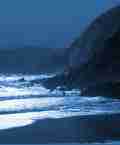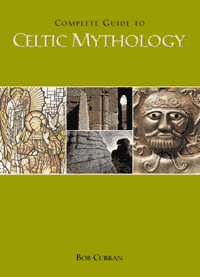 |


|
|||
 IN SEARCH OF ANCIENT IRISH HEROES - part 5 of 5 What these texts seem to suggest is that Cú Chulainn might have been Lúgh in another guise or, that a fundamental connection existed between the two. There was a strong Lúgh-cult in County Louth during the first and second centuries ad and the stories relating to Cú Chulainn, which are County Louth based, might reflect diversification among the worshippers. The distinctive warrior-bias of the Cú Chulainn myth seems to suggest this. Another medieval text in which Cú Chulainn appears is a very ancient poem entitled Tochmarc Emire (The Wooing of Eimhear). This epic was probably originally written around the eighth century but enjoyed periodic expansions and reworking of its text until the tenth or eleventh century. Encouraged to look for a suitable wife by all the other champions of Ireland, who had grown tired of the number of eligible girls thronging around the great hero, he searched all Ireland for a suitable girl. Eventually, he settled on Eimhear, the daughter of Forgall Manach who ruled lands to the south of the River Boyne in County Louth. She laid down conditions for the winning of her hand and Cú Chulainn had to perform ‘the feat of the salmon leap’ in battle. This meant killing hundreds of men in a particular way. He had to perform a special leap while delivering a single sword-stroke so that his blow would kill certain men but leave others untouched. He was also to go without sleep from November to August. Cú Chulainn agreed to these tests and returned to Eamhain Macha - the seat of the Ulster kings. Eimhear’s father, was strongly opposed to the union and followed the hero, in disguise, to the royal court where he advised Cú Chulainn to go to Scotland to study under the noted female warrior Scathach. The hero went, but first studied for a time with a warrior named Domhnall. Then he went to meet Scathach and her warriors who had been bribed to kill him. He defeated this army by performing the salmon leap. From this account came the first mention of the battle frenzy for which he was to become famous. Much impressed by his fighting prowess, Scathach took him as a lover and he helped her in her campaigns while learning about war-craft. Later Cú Chulainn returned to Ireland to claim his bride but found Eimhear’s house so well guarded that he could not take it for a whole year. In one attack, he killed over three hundred men before performing the salmon-leap over the ramparts and taking the stronghold. Having performed all the feats required of him, he claimed Eimhear as his wife and took her back with him to Eamhain Macha. Stories about the champion's death were already in circulation by the 10th century. It appears in the Ulster Cycle, and in a number of tales from around that time. The circumstances of his death are linked with an invasion of south Ulster by the forces of Meadhbh, Queen of Connacht. Meadhbh’s existence as a real person is questioned because one of the translations of her name is ‘She Who Intoxicates’ and she might have been a warrior-goddess of the Irish Midlands who inspired her followers into battle. They swept into Cuailnge, the Cooley area of County Louth, and a war between Ulster and Connacht began in earnest. Cú Chulainn at this time had grown weary of battle and had withdrawn to the Valley of the Deaf where no sound or news from the outside world could reach him. The great hero had many enemies – three of whom were the children of Cailitín, a warrior whom Cú Chulainn had slain, all of them great sorcerers. By magic they created the illusion that Eamhain Macha were being attacked and one of them, Niamh – a young lady for whom Cú Chulainn had a particular affection – came and told him that he was sorely needed in battle. On his way to the battle, he and his warriors passed three old women – a representation of the triple-goddess, signifying death – who were washing the corslets of the fallen in a river. As he passed one held up a gore-stained garment that the hero recognised as his own. He knew, then, that would be his last battle. And so it proved, for the three sorcerers were waiting to fight him. One threw a javelin that killed Cú Chulainn's charioteer Laogh and the second lodged in the side of the hero's favourite horse. The third javelin, thrown by Lughaidh, the son of Cú Roí, struck Cú Chulainn himself. The hero's intestines fell out but, gathering them up, he staggered to a nearby lake to drink. Then he used the intestines to tie himself to a great standing stone and there he stood sword in hand. For three days, his foes did not dare to approach but in the end Niamh herself, in the guise of a crow flew over and, lighting on his shoulder, confirmed he was dead. As he tried to remove the sword from the dead fingers, Lughhaidh caused the blade to slip and lopped off his own hand. The medieval tales concerning Cú Chulainn – and there is a large repository of them – were seized on by the romantic Irish writers of the late 19th century. Writers such as Standish James O'Grady, Lady Augusta Gregory, W.B. Yeats and Pádraig Pearse turned him into a popular figure, vastly distanced from the original oral tales, but more symbolic of Irish culture and nationhood. The trend continues to this day when The Hound of Cullen is still regarded as one of the foremost Irish icons.
Previous extracts of this Chapter extract:
From Complete Guide to Celtic Mythology by Bob Curran |
[ Back to top ]
All Material © 1999-2009 Irelandseye.com and contributors

